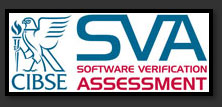Knowledgebase
Selectivity Study
The main idea behind selectivity is to reduce the impact of a fault by isolating only the affected part of the whole system and achieve maximum service availability.
When a fault occurring at any point of an electrical system is cleared by a closest protection device located upstream and no other protective device get affected by the fault, then, we can regard this as selectivity achieved.
Selectivity is achieved when the maximum short-circuit current at a point of installation is below selectivity limit of the circuit breakers supplying this point of installation. Selectivity shall be checked for all circuits supplied by one source and for all types of faults:
- Overcurrent (overload and short-circuit)
- Earth fault
As a note, if a system can be supplied by multiple sources, selectivity shall be checked in all cases.
1. Overcurrent
- Current and Time Selectivity
Selectivity can be verified by comparison of time vs. current curves of devices. The result on reports will be either Pass or Fail.
- Energy based Selectivity
Energy based selectivity between a downstream circuit breaker and an upstream fuse is achieved if the maximum let-through I²t value of the circuit-breaker is lower than the minimum pre-arcing I²t value of the fuse at minimum fault level at the endpoint of a circuit, see Note 1. The result on the reports will be either Pass or Fail.
If the minimum fault level is less than the peak value correrponding to instantenous tripping of a circuit breaker, then, energy-based selectivity between a downstream circuit breaker and an upstream fuse is not applicable, see Note 1. The result on ElectrcialOM's reports will be marked as N/A.
It is important to understand energy-based selectivity is provided by the circuit breaker design and build characteristics. The selectivity limit can only be specified by the manufacturer.
2. Earth fault
Earth fault selectivity is achieved if multiple protective devices disconnect a circuit selectively in case of an earth fault. The result on the reports will be either Pass or Fail.
However, if no RCD is used and the following checkbox from the Selectivity Options is unticked, then, the result on the reports will be N/A.
Please see following two examples for different fault levels for further clarification.
Example 1: Reduced min. Isc
We will set our fault current to 300A and set up a system consisting of a supply, a switchboard, SB1, fed by this supply, and a final circuit, FC1, connected to SB1.

You can see that our min. Isc drops to 265.9A at the end of the circuit which is at FC1 location.
We can use ElectricalOM’s Selectivity Tab to visually study the situation. We can see the Time vs. Current curves to investigate time and current selectivity.
On the right-hand side of the screen, we also see a single line diagram and protective devices used.
We can see that the disconnection time is 2.02 seconds and this is well above 0.1 seconds. In these circumstances there is no need to consider energy let-through curves and ElectricalOM will mark this field as N/A. Below is a snapshot of the selectivity study results report.


Example 2: High min. Isc
This time, we will set our fault current to 10kA and use the same system which consists of a supply, a switchboard, SB1, fed by this supply, and a final circuit, FC1, connected to SB1.

You can see that our min. Isc drops to 1.2575kA at the end of the circuit which is at FC1 location.
Similarly, we check the Time vs. Current curves to investigate time and current selectivity.
Here, unlike our previous example, the disconneciton time is <0.1 seconds. So, we check energy-based selectivity by checking Let-through energy vs. Current curves.
Below is a snapshot of the selectivity study results report.

Note 1: As shown above, energy-based selectivity checks are based on minimum fault level (min. Isc) at the endpoint of a circuit, however, the user can perform energy-based selectivity checks based on the maximum fault level (max. Isc) by adjusting the Selectivity option of EOM.
For further study, we suggest reading BS 7671, Annex A53.
Also Read
-
Schneider NSX ComPact vs ComPacT circuit breakers (Views: 1369)
-
Surge Protective Devices - SPD (Views: 6555)
-
*NEW* Ensuring Accurate Current Carrying Capacity for H07 Cables (Views: 3446)
-
Arc Fault Detection Devices - AFDD (Views: 6442)
-
Fault Current Calculations at Source Component (Views: 6075)





